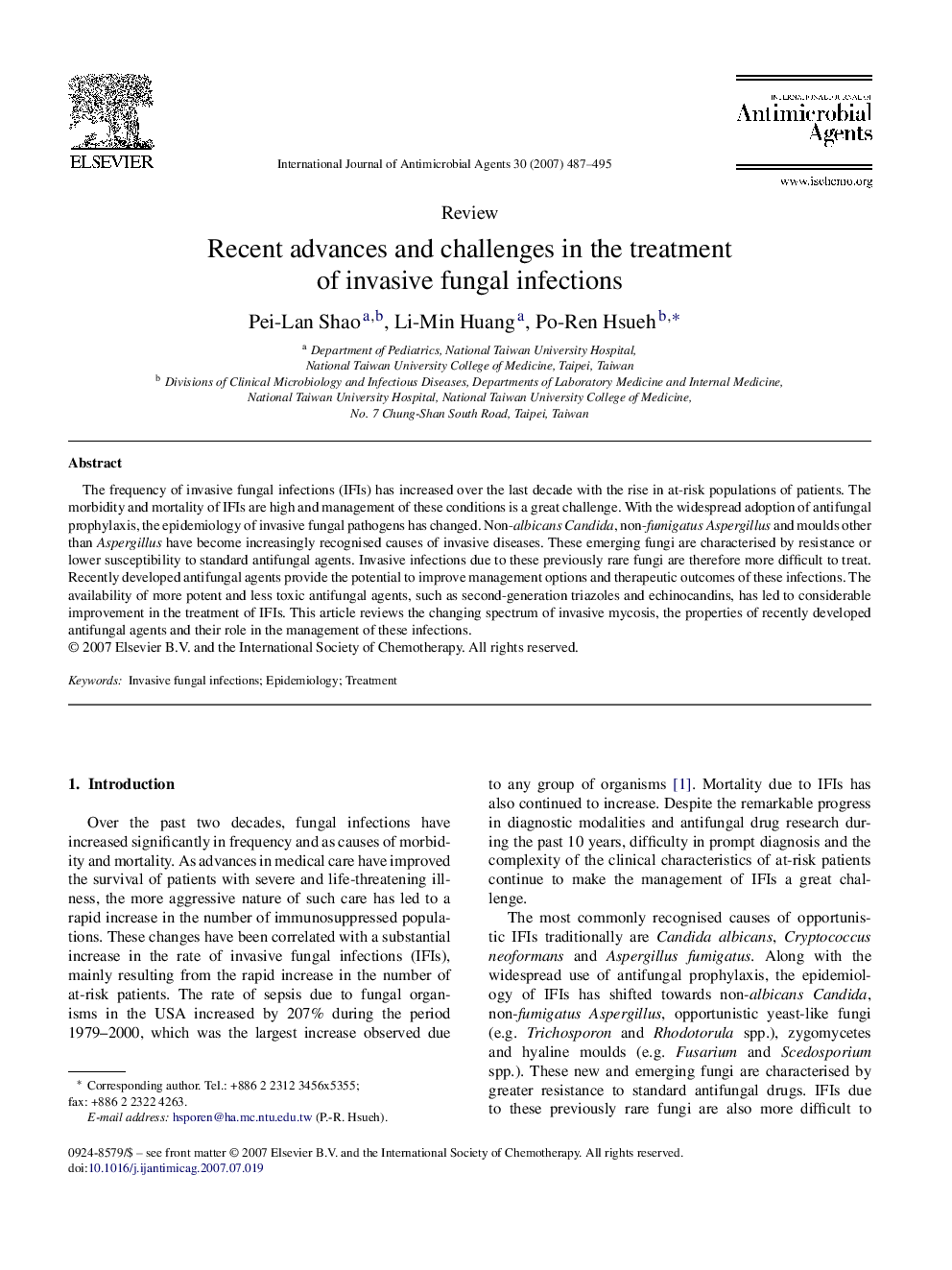| Article ID | Journal | Published Year | Pages | File Type |
|---|---|---|---|---|
| 3360742 | International Journal of Antimicrobial Agents | 2007 | 9 Pages |
The frequency of invasive fungal infections (IFIs) has increased over the last decade with the rise in at-risk populations of patients. The morbidity and mortality of IFIs are high and management of these conditions is a great challenge. With the widespread adoption of antifungal prophylaxis, the epidemiology of invasive fungal pathogens has changed. Non-albicans Candida, non-fumigatus Aspergillus and moulds other than Aspergillus have become increasingly recognised causes of invasive diseases. These emerging fungi are characterised by resistance or lower susceptibility to standard antifungal agents. Invasive infections due to these previously rare fungi are therefore more difficult to treat. Recently developed antifungal agents provide the potential to improve management options and therapeutic outcomes of these infections. The availability of more potent and less toxic antifungal agents, such as second-generation triazoles and echinocandins, has led to considerable improvement in the treatment of IFIs. This article reviews the changing spectrum of invasive mycosis, the properties of recently developed antifungal agents and their role in the management of these infections.
